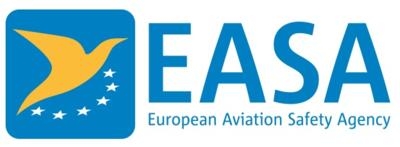Mon, Mar 30, 2020
Thermal Runaway May Lead To Fire
EASA has issued a Safety Information Bulletin (SIB) for lithium batteries installed on multiple models of Emergency Locator Transmitters installed aboard airliners.

These ELT and battery packs are known to be installed on, but not limited to Certification Specification CS-23 and CS-25 aeroplanes, CS-27 and CS-29 helicopters, or equivalent certification regulations, i.e. Federal Aviation Regulations (FAR) or Joint Aviation Requirements (JAR). Some of these ELT and battery packs may also be carried on board of an aircraft by the operator without being installed as an element of the aircraft's type design.
According to the SIB, The affected ELT and battery packs, in case of a thermal runaway, may release gases on fire. As this fire eventually self-extinguishes, the design remains compliant with the criteria of Appendix 1 of ETSO-C142a. Nevertheless, the presence of fire may affect the performance of the surrounding equipment, especially when the ELT is located close to safety equipment such as flotation devices.
EASA recommends holders of a type design approval (type certificate) or design change approval (supplemental type certificate, or minor change approval) to consider the presence of fire in addition to hot gases in assessing the effect at aircraft level of battery failures for the articles listed in the Applicability section of this SIB. This assessment should explicitly include the effect of fire or hot gases impingement on any stowed safety equipment installed in proximity of the battery such as life rafts, life jackets or emergency floatation systems. The EASA Special Condition on ‘Nonrechargeable Lithium Battery Installations’ provides additional considerations (also valid for CS-23, CS-27, CS-29 aircraft) to perform this assessment.
EASA recommends operators of aircraft that have any affected ELT or battery pack(s) carried on board which are not part of the approved aircraft type design, or design change, as applicable, to ensure that the presence of fire (in case of an ELT battery failure) cannot propagate to the surrounding material.
EASA recommends the use of an ELT model equivalent to those listed in the Applicability section of this SIB, but approved in accordance with RTCA DO-227A (as shown by an ETSO authorisation in accordance with ETSO-C142b or with ETSO-C142a with a deviation to use RTCA DO-227A) for the battery aspects.
(Source: EASA)
More News
Aviation Governance Secured...At Least For a While The National Business Aviation Association similarly applauded the passage of the FAA's recent reauthorization, contentedly recou>[...]
Emphasis On Growing The Future of Aviation Through Concentration on 'AFFORDABLE FLYERS' It's been a number of years since the Latest Edition of Jim Campbell's HUGE SportPlane Resou>[...]
Amazilia Aerospace GmbH, Develops Digital Flight Control, Flight Guidance And Vehicle Management Systems Textron eAviation has acquired substantially all the assets of Amazilia Aer>[...]
Honeywell's Primus Brings New Tools and Niceties for Hawker Operators Hawker 4000 business jet operators have a new installation on the table, now that the FAA has granted an STC f>[...]
Company Celebrates Niche-but-Important Advancement in Industry Standards Echodyne has announced full integration of its proprietary 'EchoFlight' radar into the e American Aerospace>[...]
 Bolen Gives Congress a Rare Thumbs-Up
Bolen Gives Congress a Rare Thumbs-Up The SportPlane Resource Guide RETURNS!!!!
The SportPlane Resource Guide RETURNS!!!! Buying Sprees Continue: Textron eAviation Takes On Amazilia Aerospace
Buying Sprees Continue: Textron eAviation Takes On Amazilia Aerospace Hawker 4000 Bizjets Gain Nav System, Data Link STC
Hawker 4000 Bizjets Gain Nav System, Data Link STC Echodyne Gets BVLOS Waiver for AiRanger Aircraft
Echodyne Gets BVLOS Waiver for AiRanger Aircraft



